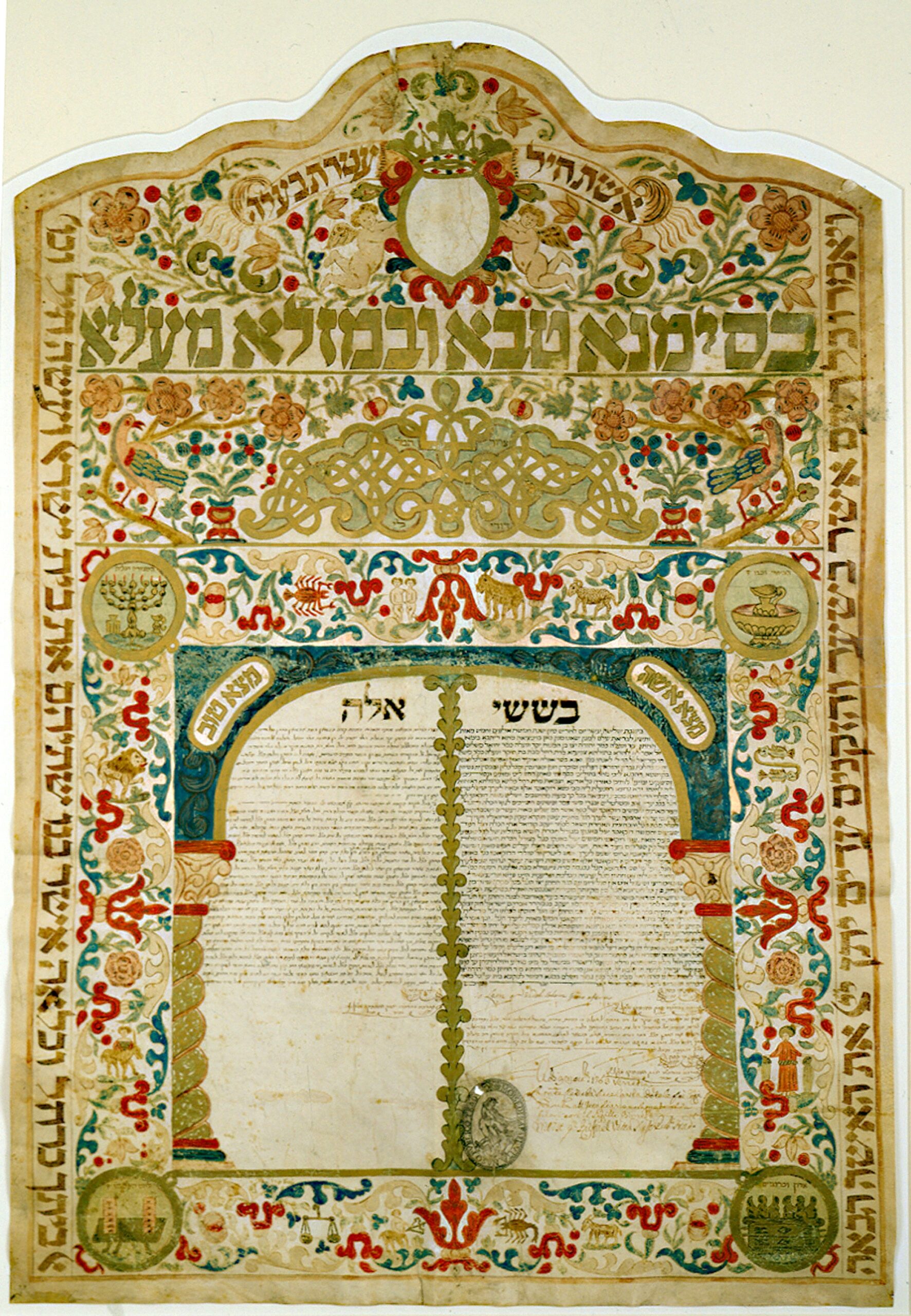A Venetian Ketubbah


Ketubbah for the wedding of Judah Leon, son of Jehiel mi-Salom, and Rachel, daughter of Moses Hai Curiel, Friday, May 30, 1749, Venice, Italy
This week’s parashah prominently features the mission of Abraham’s servant to find a wife for Isaac. The account includes the giving of gifts to Rebecca and her family (24:22, 53) and the assurance from Abraham’s family that they themselves are wealthy (Gen. 24:35). For thousands of years, ketubbot (Jewish marriage contracts) have established the financial responsibilities in a Jewish marriage. This notable ketubbah is one of over 500 in The JTS Library’s world-renowned collection.
In this ketubbah’s unusually romantic engagement articles, the bride and groom “agree to conduct their mutual life with love and affection, without hiding or concealing anything from each other; furthermore, they will control their possessions equally. However, in case of a quarrel, God forbid, between them, they shall follow the customs of the Ashkenazim in Venice in this matter.” The latter stipulation was inserted because the contract celebrates a “mixed” marriage between a Sephardi bride and a non-Sephardi, presumably Ashkenazi, groom.
The decoration is characteristic of Venice and the surrounding environs. The floral border contains the twelve signs of the zodiac, as well as implements from the ancient Jerusalem Temple in the corners. A love knot that has no beginning or end is borrowed from Italian folk culture.



